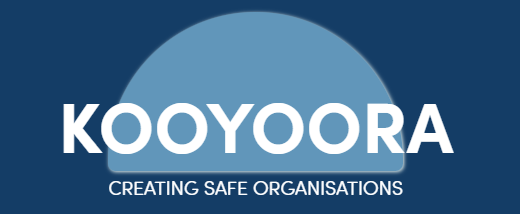The Voice of the Child: How Listening to Children Is Essential in Safeguarding
When we talk about safeguarding, it is easy to assume that children are seen and heard simply because systems exist to protect them. Yet, children’s perspectives are often absent in the design and implementation of protective interventions. Being heard is not merely speaking; it is having your experiences recognised, understood, and acted upon.
Our CEO, Fiona Boyle, and Kim Porter, one of our talent capability builders and investigators, recently had the privilege of attending the Shared Futures: Communities That Listen to Children conference. This inspiring event showcased the commitment across sectors to amplifying children’s voices and co-designing supports that truly meet their needs. It was a vivid reminder that listening is central to effective safeguarding.
At the conference, Dr. Wendy Bunston OAM challenged attendees to critically reflect on how they support children, highlighting the importance of recognising subtle cues in infants and young children affected by trauma. Meena Singh (Acting Principal Commissioner for Children and Young People) reinforced that safeguarding interventions must genuinely consider the voice of the child, rather than assuming what children need. Most impactful were the insights from children and young people on the panel. Their reflections on inclusion and what it truly means to be heard were both powerful and humbling, demonstrating that centring children in decision-making is not just ethical, it transforms outcomes.
Understanding and Responding to Children’s Voices
According to Dr. Wendy Bunston OAM, children, even infants, communicate their experiences and needs through behaviours, expressions, and subtle cues. Recognising and responding to these signals is critical for effective, trauma-informed intervention and response. Ignoring them risks ineffective support, retraumatisation, and erosion of trust in safeguarding systems.
Research by Dr. Wendy Bunston OAM emphasises that young children affected by trauma, particularly from family violence, require therapeutic approaches that centre on their experiences rather than adult assumptions. She advocates child-led therapy, where the child’s behaviours and expressions guide the process, ensuring interventions are both effective and respectful of the child’s autonomy. Even very young children can communicate complex emotions and needs if adults are attentive and responsive.
“Infant/Child led work requires a shift within the mind of the therapist (or worker) and a curiosity about just what the infant/child may be thinking, imagining, expressing and feeling. Infants and children are not objects that we do things to, or passive participants in the therapeutic process who we work on, but are willing, able and available unique subjects who are communicating volumes to their external world about how their internal world is faring” (Bunston 2008, p.335). Journal of Family Studies (2008) 14: 334–341
Through her consultancy and professional training, Dr. Bunston equips practitioners to interpret and respond to these subtle cues, bridging the gap between observation and meaningful support. By integrating these principles, organisations can create child-centred, trauma-informed, and responsive safeguarding systems.
Integrating Children’s Perspectives
Research underscores that when children's voices are overlooked, policies and programs are shaped by adult assumptions rather than lived experiences, potentially leaving vulnerabilities unaddressed and sometimes exacerbating trauma. The Australian Institute of Family Studies (AIFS) highlights that actively listening to children and young people about their experiences in organisations provides critical insights into safety and risk that adults may overlook. Their report, Listening to children and young people’s voices about safety in organisations, emphasises the importance of incorporating children's perspectives to create environments where they can express themselves safely and their experiences inform decisions. Prioritising the voice of the child requires professionals to listen actively, interpret subtle signals, and centre the child in planning and response.
Listening to children is not a symbolic gesture, it is an essential strategy. Safeguarding systems that incorporate these voices are more responsive, targeted, and capable of preventing harm. In practice, this could involve child-focused assessments, participatory decision-making processes, and structured ways to integrate children’s feedback into policy and practice.
Putting Children’s Voices at the Centre of Practice
At Kooyoora, we are committed to helping organisations build robust, agile systems that honour the voices of children and embed them in decision-making processes.
To support this, we offer free toolkits, including our Abuse Prevention Framework, designed to strengthen the environments where children live, learn, and grow. We invite you to join us in creating spaces where children are not only heard but empowered.
Our Conference Poster for the Abuse Prevention Framework



